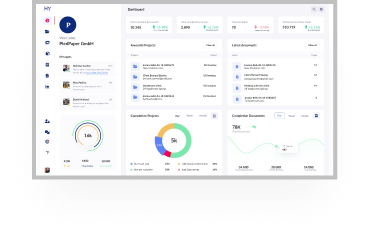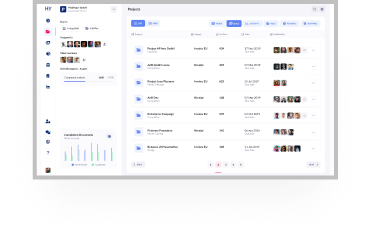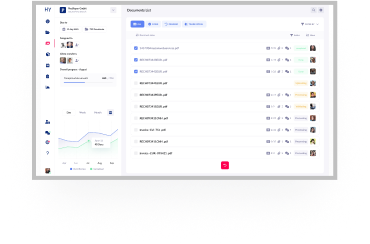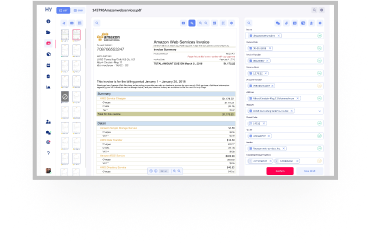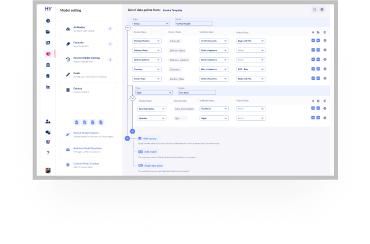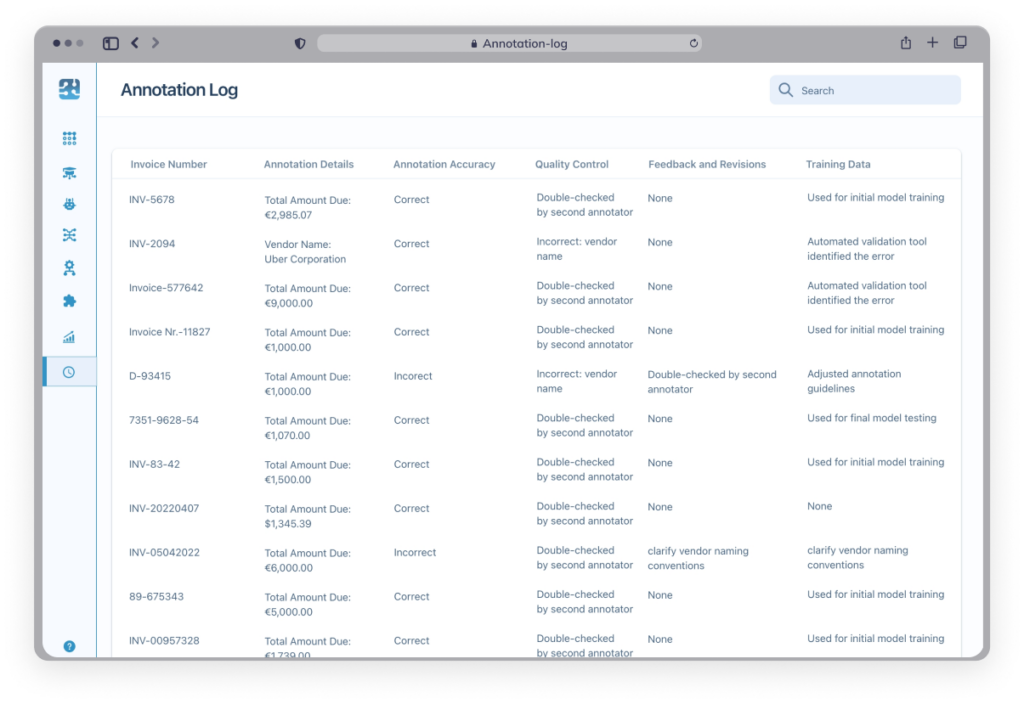No-Code Studio
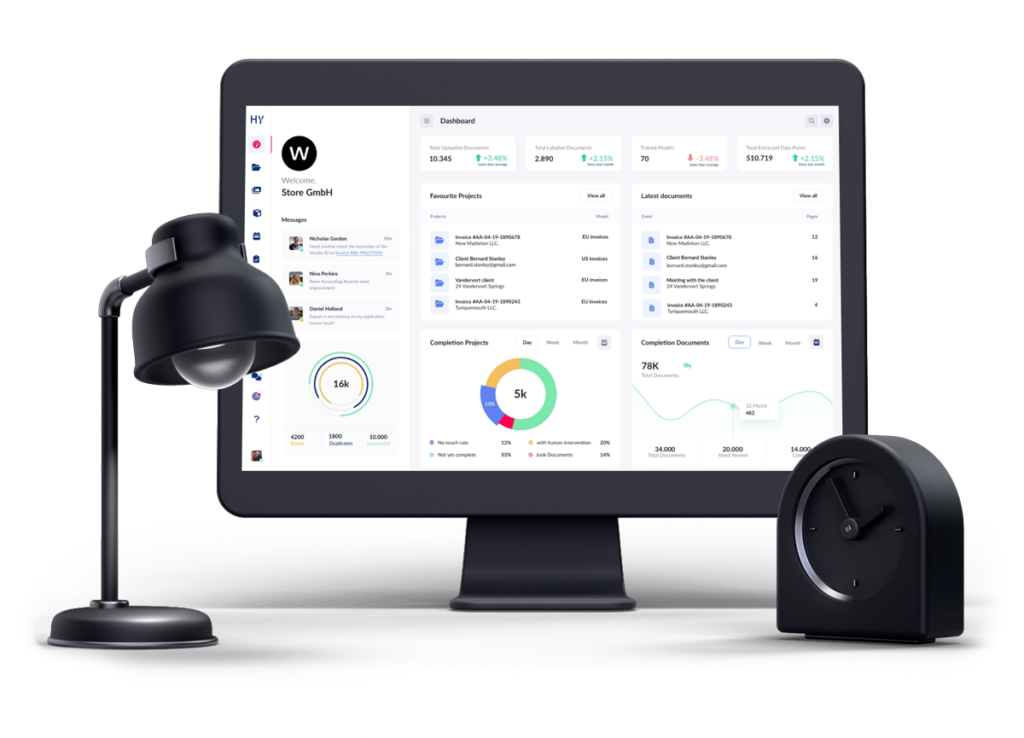
Scope - during four years
- Design a strategy planning and roadmap
- UX Research & analysis (task flows, personas, competitive benchmarks)
- Interaction design (wireframes, prototypes, user testing)
- Visual design (mockups, moodboards, style guide)
- Documentation and handover-ready specs
my role
- Led the end-to-end product design process across multiple AI SaaS tools.
- Translated complex ML and automation concepts into clear, usable design solutions.
- Built and maintained a roadmap for design operations, ensuring scalability.
- Designed wireframes, prototypes, and conducted usability validation sessions.
- Measured and analyzed design impact through feedback loops and data metrics.
- Collaborated cross-functionally with PMs, engineers, researchers, and data scientists to deliver cohesive UX from ideation to release.
Hypatos
Company delivers deep-learning automation for enterprise document workflows. Its no-code B2B platform helps large companies automate manual invoice processing – from data extraction to fraud detection, reducing costs and time while boosting efficiency. Since 2018, Hypatos has processed millions of invoices across global industries through its AI SaaS ecosystem.
The Problem:
Enterprises were losing millions due to manual invoice handling:
-
High operational costs and delays
- Frequent errors → fraud, duplicates, and overpayments
- Lack of transparency across finance teams and suppliers
- Existing automation tools were too technical for non-experts
Design Challenges:
How might we design a no-code platform that:
-
Makes complex automation simple and transparent
-
Builds trust for non-technical finance users
- Scales across enterprise environments and workflows
Objectives
- Create an AI SaaS platform to automate invoice processing (classification, validation, enrichment, fraud detection).
- Ensure usability for users without data science or accounting expertise.
- Build a scalable design system to support future Hypatos products.
- Deliver detailed, handover-ready documentation for engineering implementation.
Our team workflow:
Within the Design Team:

Observe

User flows

Test

Document
Cross-Team Collaboration:

Deliverables

Design system

Co-Ideation

Workshops
Agile Integration:

Communicate

Meetings

Demo

Sprints
Research & Analysis
We conducted a competitive analysis of leading document automation tools to uncover usability gaps and transparency issues in the market. Our goal was to identify underserved opportunities and best practices to guide Hypatos’ design direction.
Each design ops team member was responsible for monitoring one or two direct competitors, maintaining a continuous benchmark cycle. This ensured we could quickly adapt to emerging trends, isolate poor UX patterns, and refine our offering around real user needs.
Through this process, we defined key personas – finance managers, clerks, controllers, and auditors (ages 18-55) – and discovered recurring pain points: steep learning curves, distrust in AI accuracy, and low visibility into automation performance.
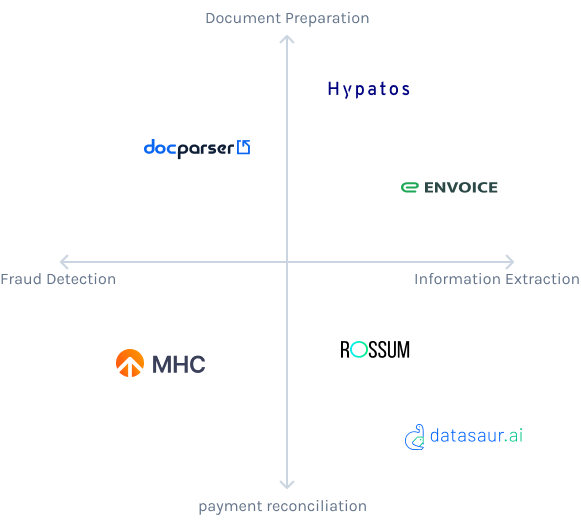
USER PERSONAS AND CHALLENGES :
Our target users ranged from entry-level clerks to CFOs. Their main needs were clarity and transparency in automation.
User Flows & Task Design
- Mapped the full journey from document capture → validation → compliance → posting.
- Defined decision points for different roles and visualized bottlenecks using iterative flow testing.
- Visualized bottlenecks using Visio, refined with iterative testing.
- User feedback sessions shaped streamlined flows that balanced transparency and efficiency.
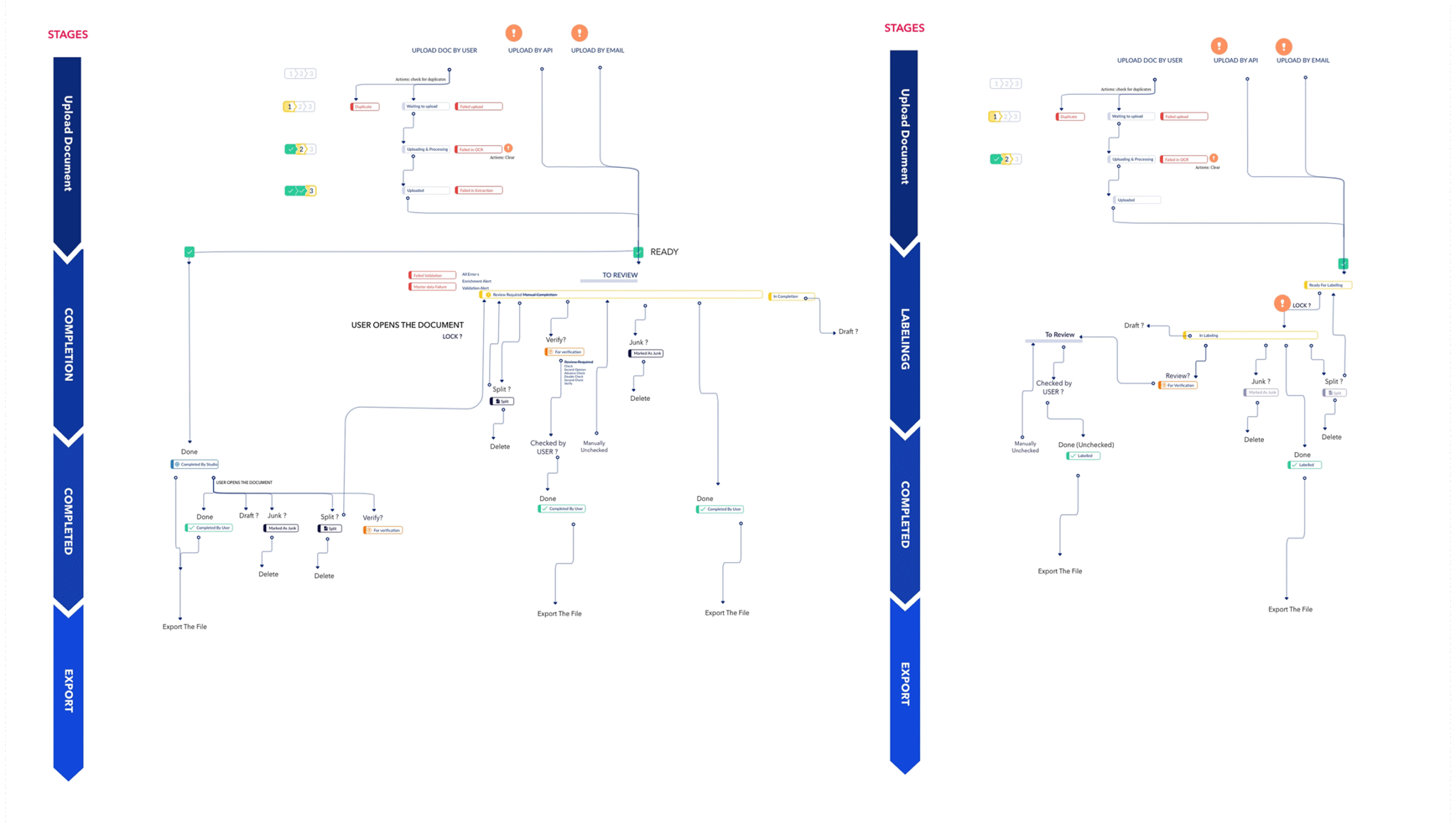
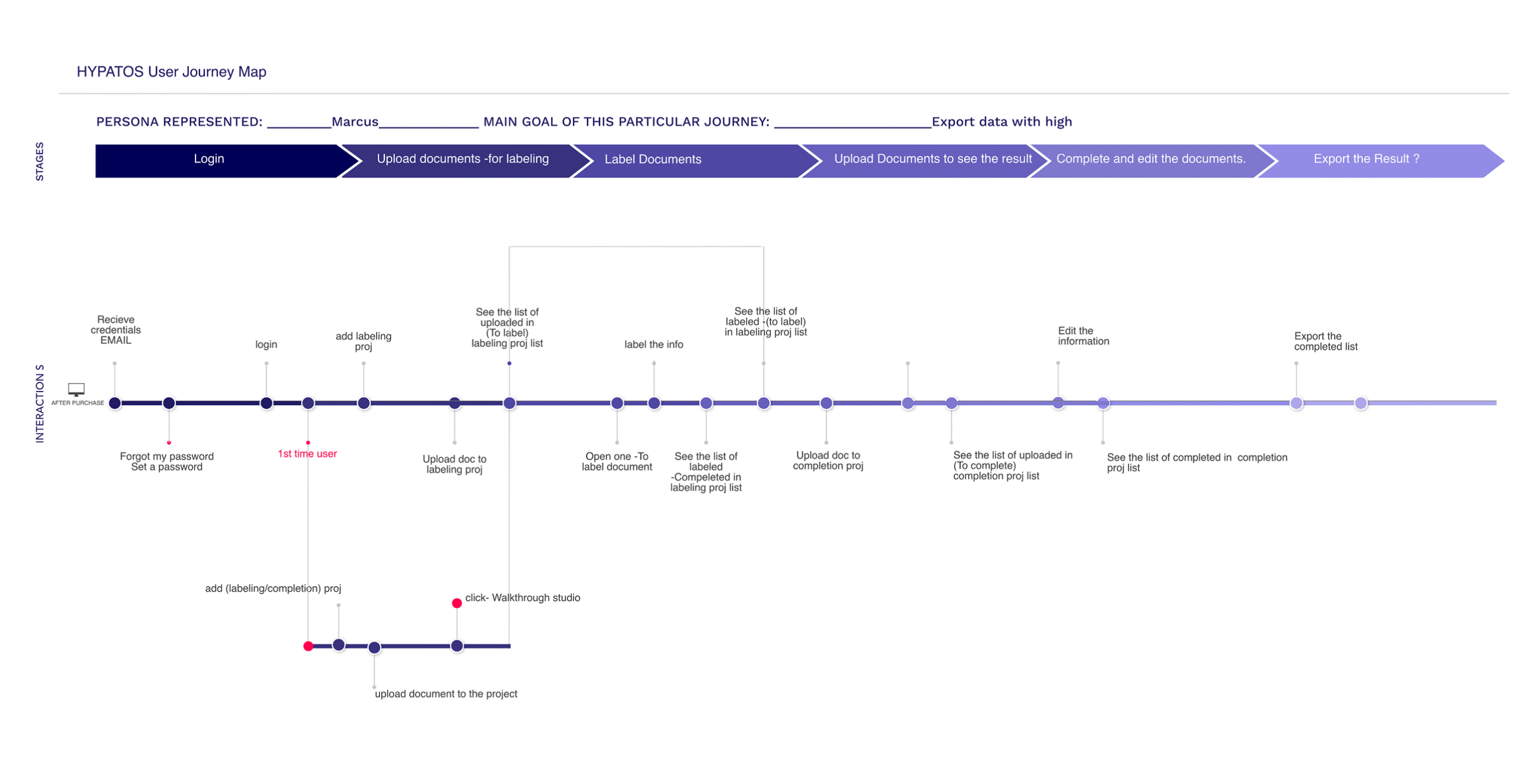
Wireframing & Prototyping
To design Hypatos Studio, we started each concept with quick whiteboard or paper sketches to explore ideas freely before moving into digital form. We then used Adobe XD to build both low-fidelity and high-fidelity wireframes, allowing for fast iteration and alignment with stakeholders.
Each version was tested with real users to validate clarity and flow. Feedback loops were short and focused, helping us refine the structure and interactions continuously until the experience felt effortless and natural.
MOODBOARDS
- Developed two moodboards reflecting Hypatos’s brand tone and personality.
- Consolidated into a style guide covering UI, colors, typography, and components.
- Established design system for reuse across dashboards, AI agents, and model training guides.
STYLE GUIDES & BRAND AESTHETIC
Hypatos style guide that serves as a reference for our website, studio UI, and Model training guide to ensure consistency and coherence throughout the site.
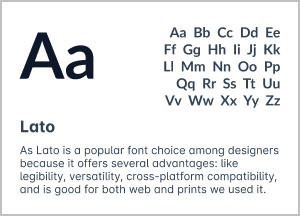
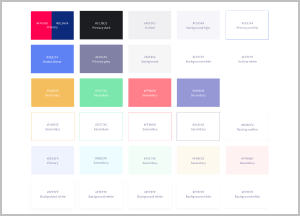

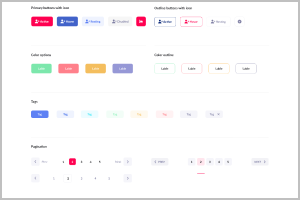
PROJECT SCREENS
All of our projects in Hypatos get validated with some of the assumptions we had on the contents of the key dashboards, projects, and documents after conducting a series of user interviews, along with a set of high-level testing and results data. The user experience here is meant to allow users to scan their projects and the results to date and pick up where they left off in their last completion session.
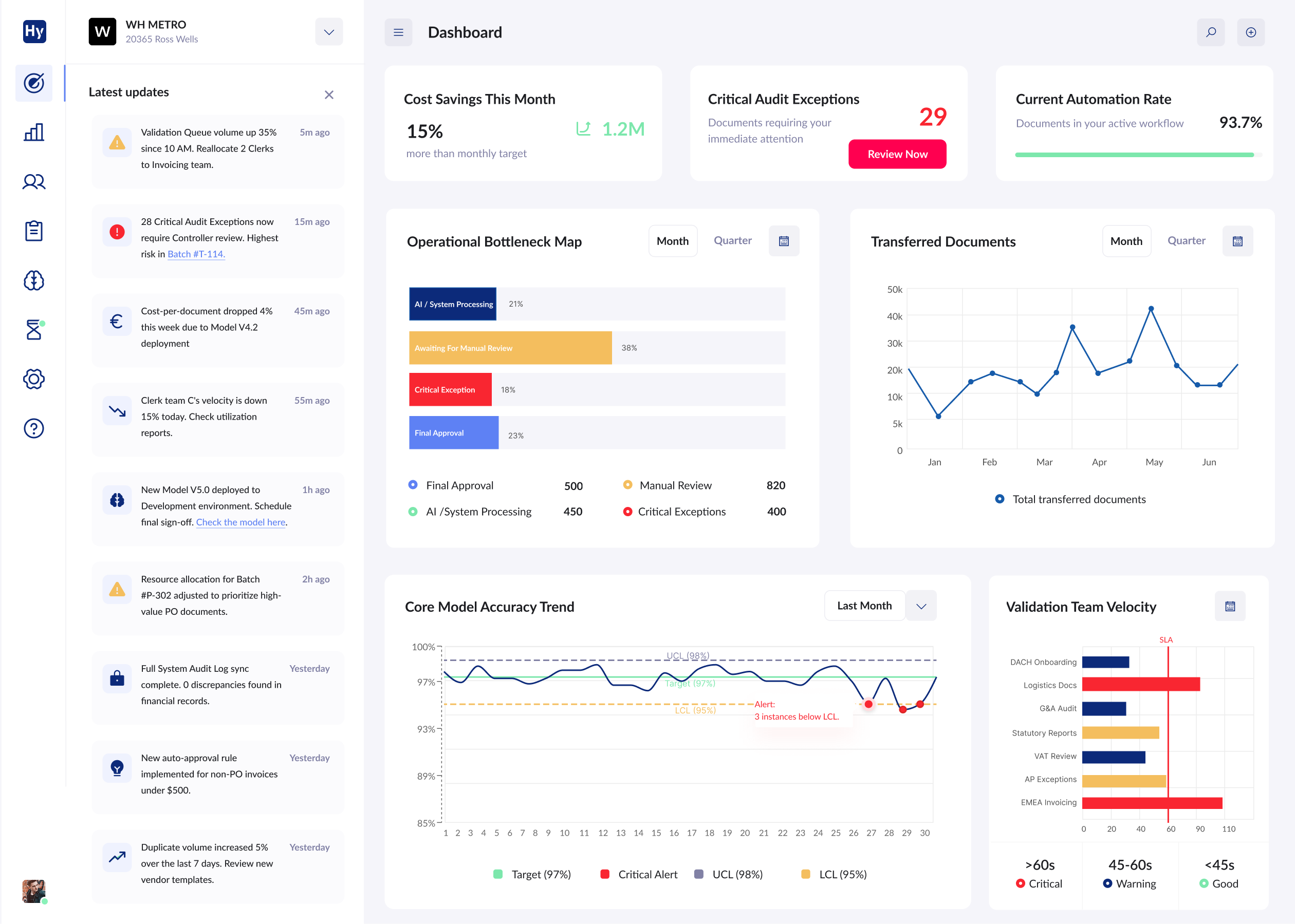
Collaboration & Delivery
Our cross-functional workflow included our agile sprints, weekly demos, and also usability reviews.
Final deliverables included:
- Handover-ready prototypes
- Specification documents for engineers
- Scalable design system assets
THE RESULTS AND OUTCOMES
- Increased user trust & adoption of Hypatos Studio.
- Built a coding-ready web app backed by a scalable design system.
- Validated AI transparency principles through iterative user testing
- Improved brand consistency across Hypatos products.
